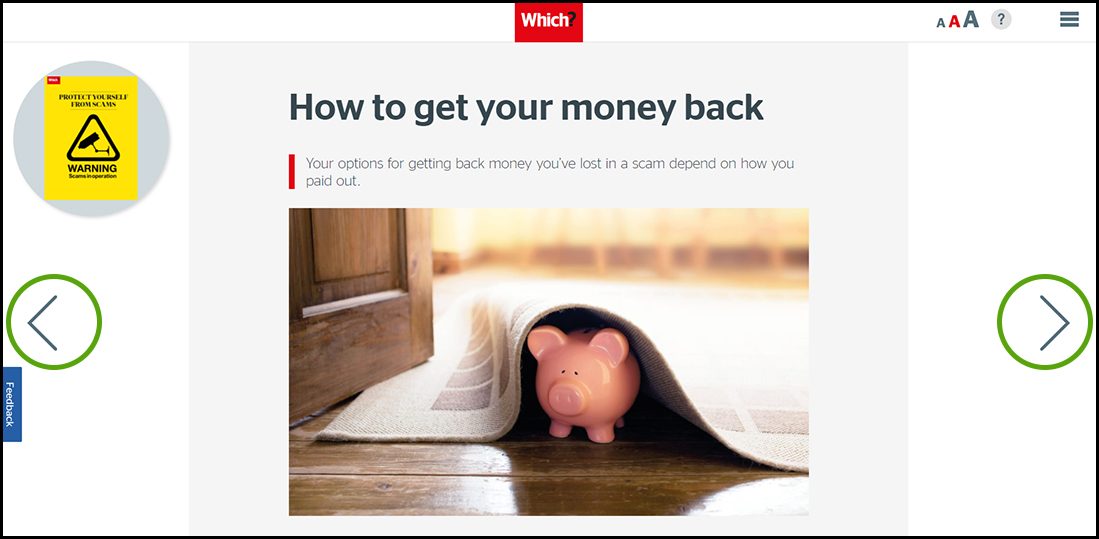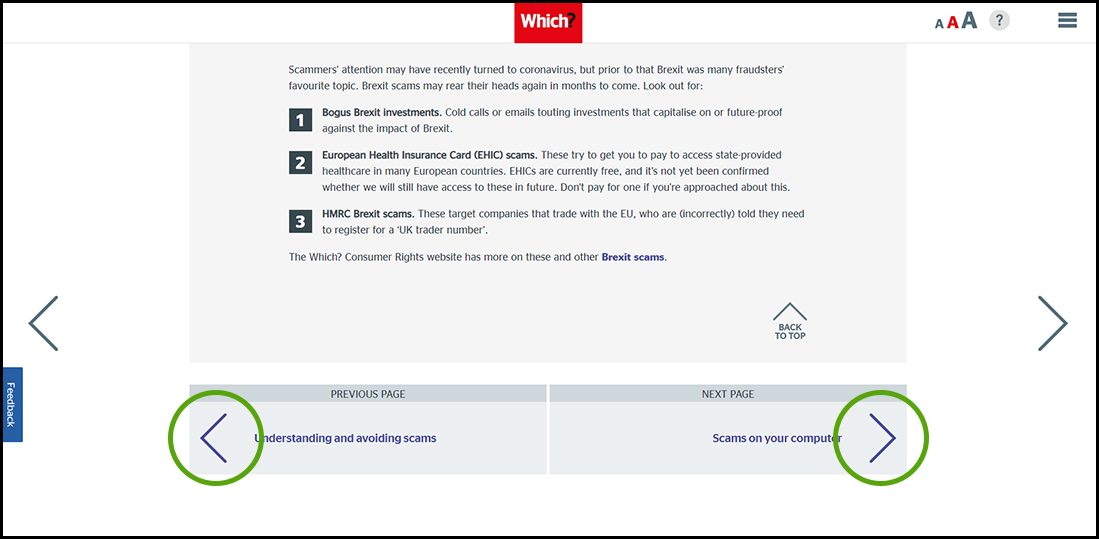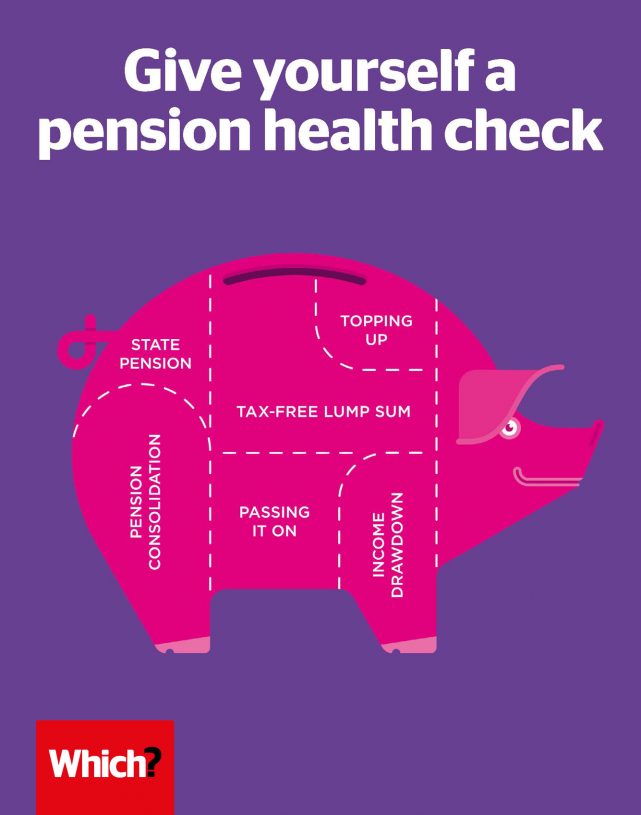User guide
Finding your way around the guide
To navigate between pages, click or tap the arrows to go forwards to the next page or backwards to the previous one. The arrows can be found either side of the page and at the bottom, too (circled in green, below).


Menu/table of contents
Click or tap on the three horizontal lines in the top-right of your screen to open the main menu/table of contents. This icon is always visible whether you're using a computer, tablet or smartphone. The menu will open on top of the page you’re on. Click on any section title to visit that section. Click the cross at any time to close the table of contents.
Text size
On a computer, you'll see three different sized letter 'A's in the top-right of your screen. On a smartphone or tablet these are visible when you open the menu (see above). If you’re having trouble reading the guide, click or tap on each of the different 'A's to change the size of the text to suit you.
Pictures
On some images you'll see a blue double-ended arrow icon. Clicking or tapping on this will expand the picture so you can see more detail. Click or tap on the blue cross to close the expanded image.
Where we think a group of images will be most useful to you, we've grouped them together in an image gallery. Simply use the blue left and right arrows to scroll through the carousel of pictures.
Links
If you see a word or phrase that's bold and dark blue, you can click or tap on it to find out more. The relevant website will open in a new tab.
Jargon
If you see a word or phrase underlined, click or tap on the word and small window will pop up with a short explanation. Close this pop-up by clicking or tapping the cross in the corner.
Help
On a computer, you'll see a question mark icon in the top-right of your screen. On a smartphone or tablet this is visible when you open the menu (see above).
Clicking or tapping on the question mark will open this user guide. It opens on top of the page you're on and you can close it any time by clicking or tapping the cross in the top-right corner.

Personal pensions explained
For those without a workplace pension, or those seeking more control of their savings and better investment performance, a personal pension may be a good option.
If you don’t have access to a workplace pension scheme, you can still make private provision with a pension from an insurance company or investment broker. These are known as personal pensions, though they come in different forms.
For advice on what to do if you’re unhappy with your pension provider, or for tips on how to spot a pension scam, visit Which? Consumer Rights.
For many people, a self-invested personal pension Self-invested personal pension (Sipp)A personal pension that offers wide investment choice before retirement and/or in drawdown. (Sipp) is a good option, particularly if you’re planning on using an income drawdown plan in retirement. Sipps give you greater control over your pension investments, rather than leaving all the investment decisions to your pension provider, and you can often manage the whole thing online.
Sipps can also be an option for people with defined benefit pensions who want to transfer savings into a plan that qualifies for income drawdown arrangements. Although be aware that it is rarely a good idea to transfer out of a defined benefit scheme.
Q: Is a Sipp right for me?
A: For active investors and retirement planners, being able to move your money between thousands of funds and choose direct shares can be invaluable, but only consider a Sipp if you have experience of investing and are comfortable making your own decisions.
Some investments that you can place in a Sipp are risky, and may not be suitable for you. It’s always worth seeking independent financial advice before making a decision about investing your money (see Where to get the best advice for tips on choosing an adviser).
If you don’t have experience, a stakeholder pension – a more basic personal pension with government-imposed caps on charges – may be better suited to you. You’ll have a more limited choice of investments, but you can still choose a fund that has a range of assets in it.
Sipps are most likely to be suitable for:
- people comfortable with their own investment decisions who want a wider range of investments
- people with a larger pension pot or who will be making significant pension contributions
- people with a financial adviser making decisions on their behalf
- people looking to consolidate all of their pension pots into one place
- people who want to keep their money invested after they retire so they can draw down an income.
Q: What types of Sipp are available?
A: Full Sipps offer the widest choice of investment, but they have the highest charges and are really only suitable for people with large pension funds. The average amount invested in this type of Sipp is between £150,000 and £450,000. The alternative is a low-cost Sipp offering some investment options but probably not direct property, offshore funds or unquoted shares. Low-cost Sipps may be more suitable for people with smaller pension savings to invest.
Learn more on our website about the different types of Sipp you can choose from.
Q: How do I set up a Sipp?
A: Low-cost Sipps are offered by online investment brokers and are designed to be managed by the investor without the help of an adviser. If you do use an adviser, you’re likely to be offered a more expensive full Sipp. These plans are generally offered by large stockbrokers and wealth management companies.
Q: What will a Sipp cost me?
A: This is an area where you need to be careful. Which? Money research shows that some Sipps are expensive, with a multitude of different charges that can eat into your savings. You'll need to consider administration charges, management fees, platform fees and any costs involved in transfers of pension savings into the Sipp from other plans.
If you’re thinking about putting together your own investment portfolio, explore our beginner’s guide to investment.
Q: How do I draw an income from a Sipp?
A: When the time comes to take money from your Sipp to live on in retirement, most people will opt for income drawdown, where you take an annual income and the rest of the pot stays invested. The risk with drawdown is that you can exhaust your fund if you take out too much or if your investments underperform. You’re free to buy an annuity with some or all of your money, if that’s your preferred option.


